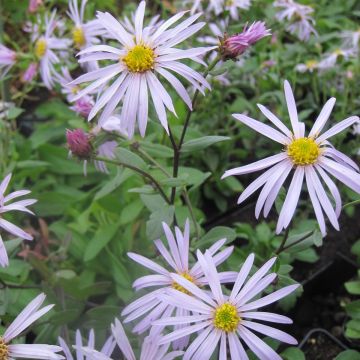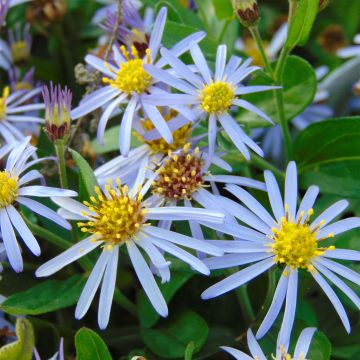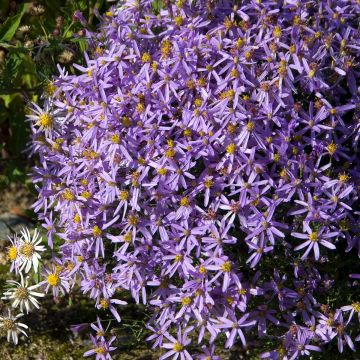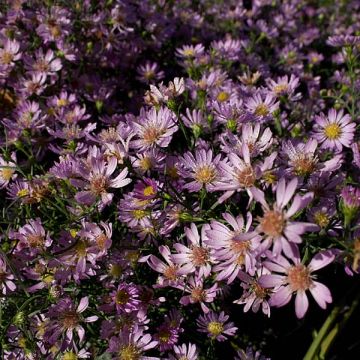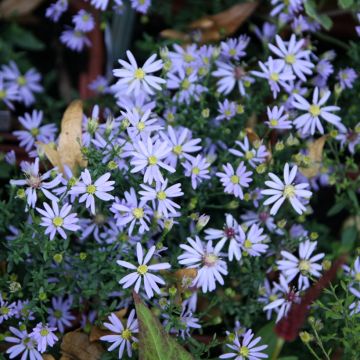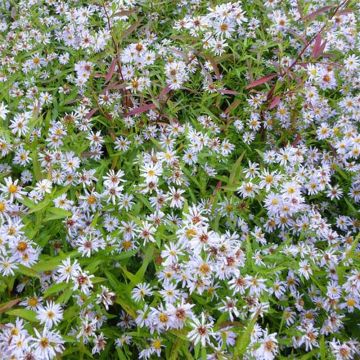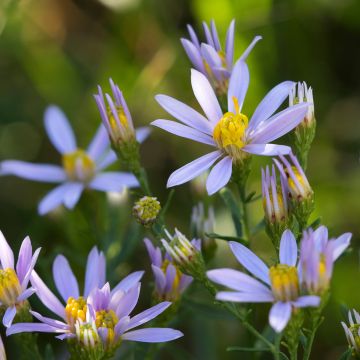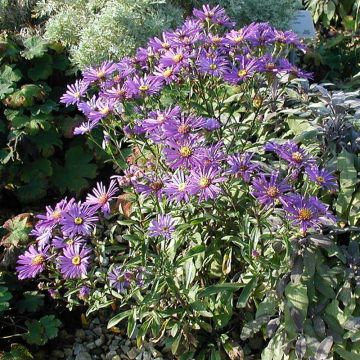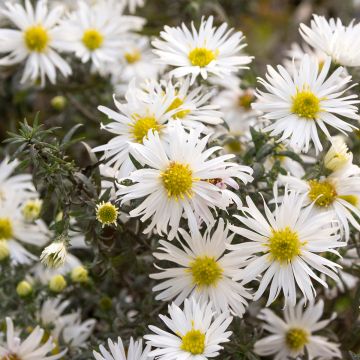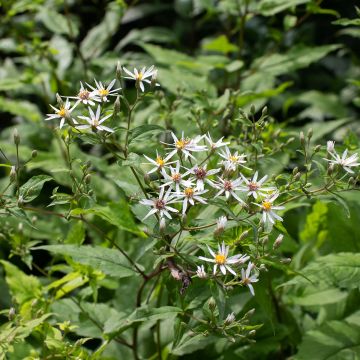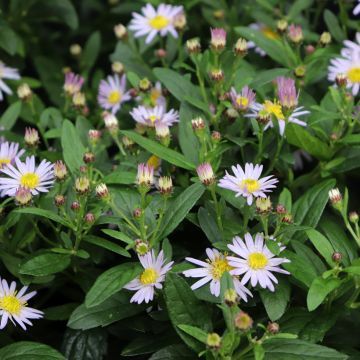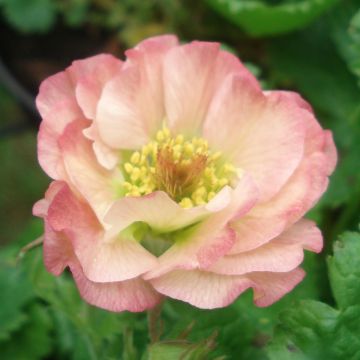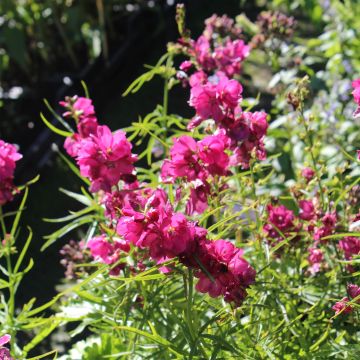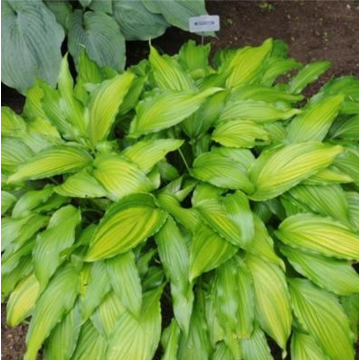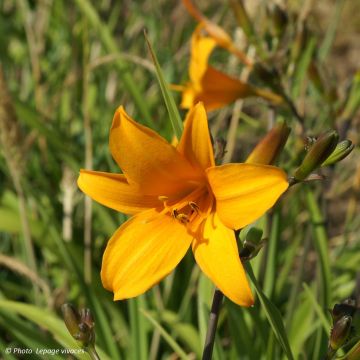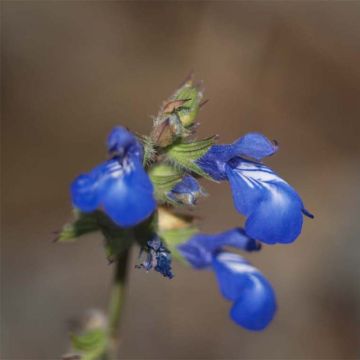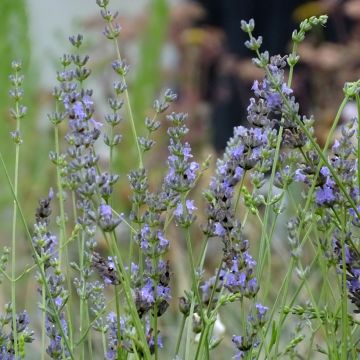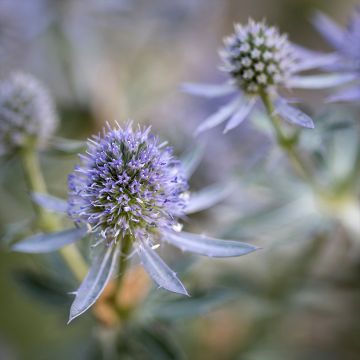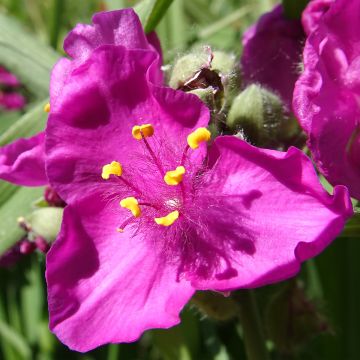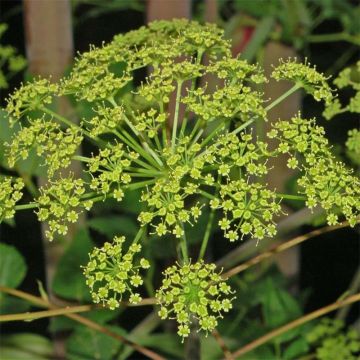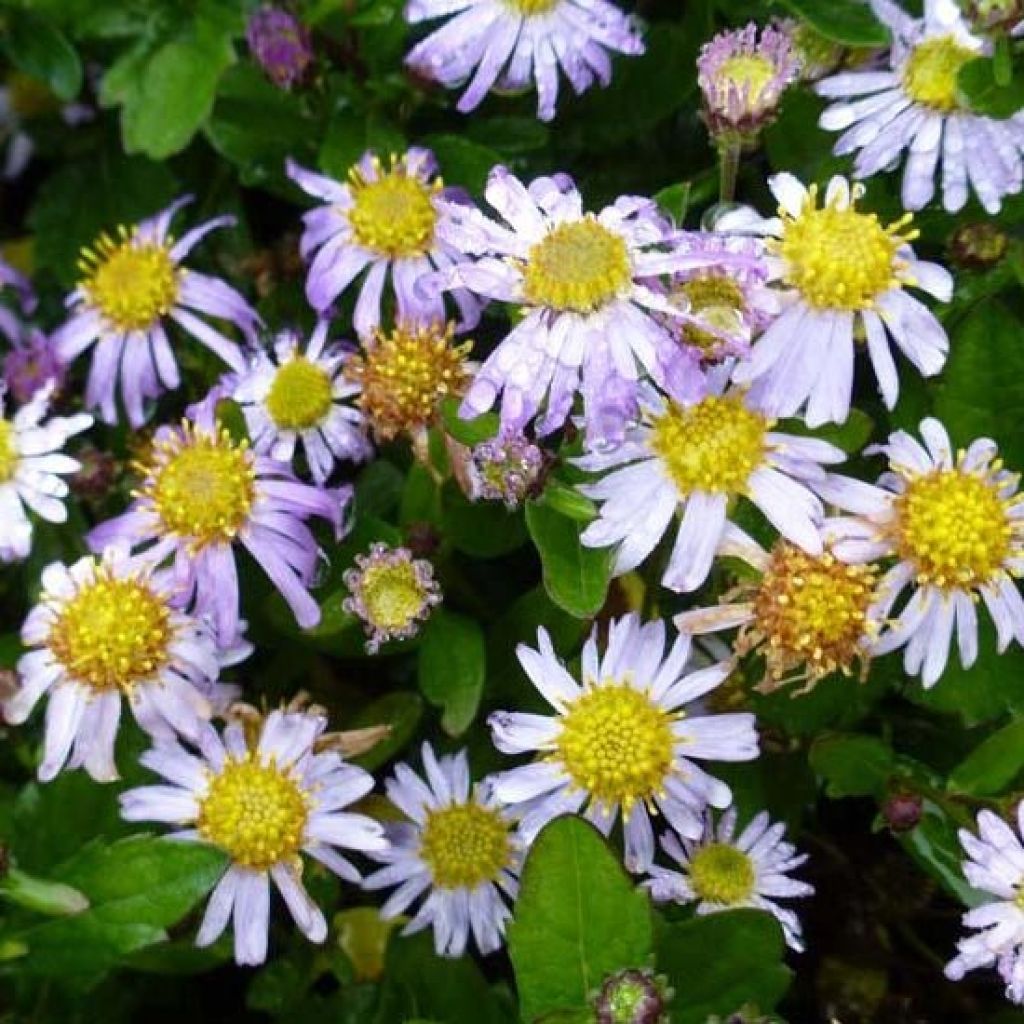

Aster ageratoides Asmo
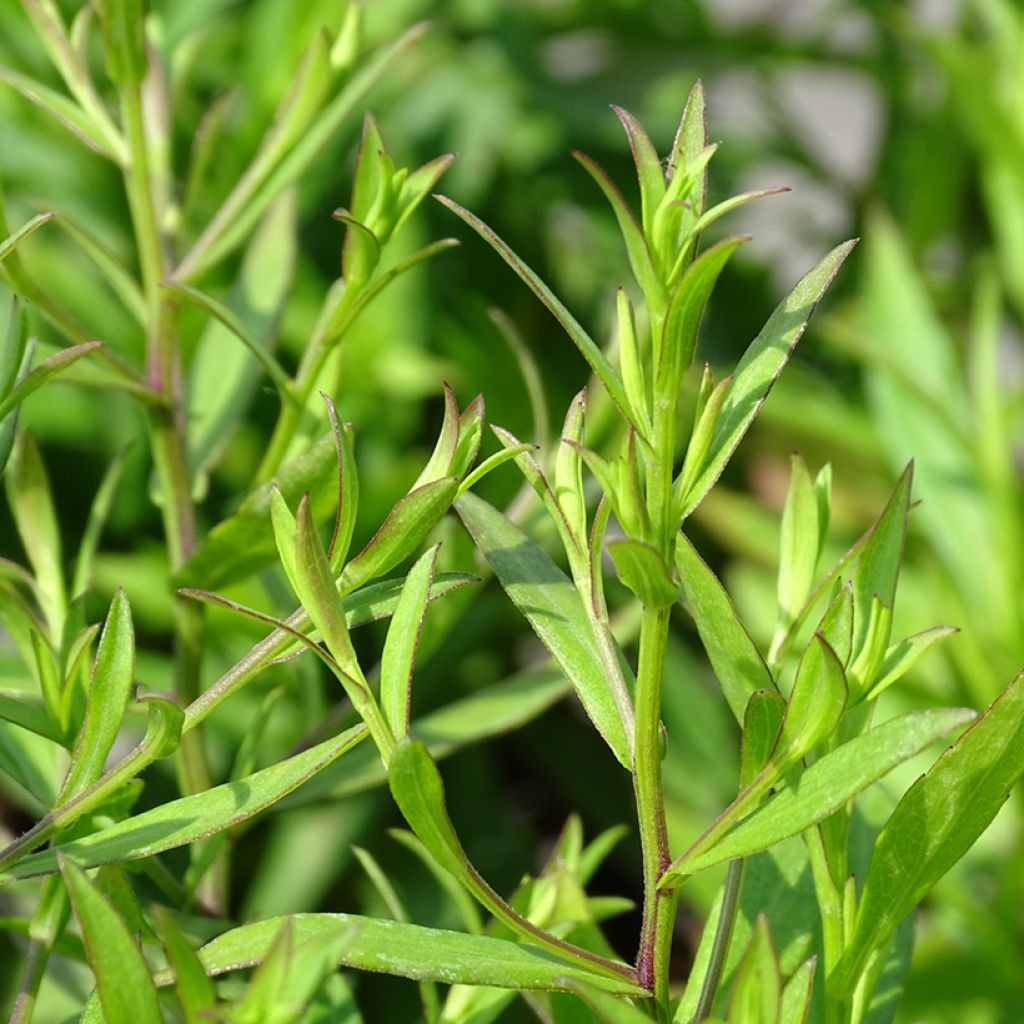

Aster ageratoides Asmo
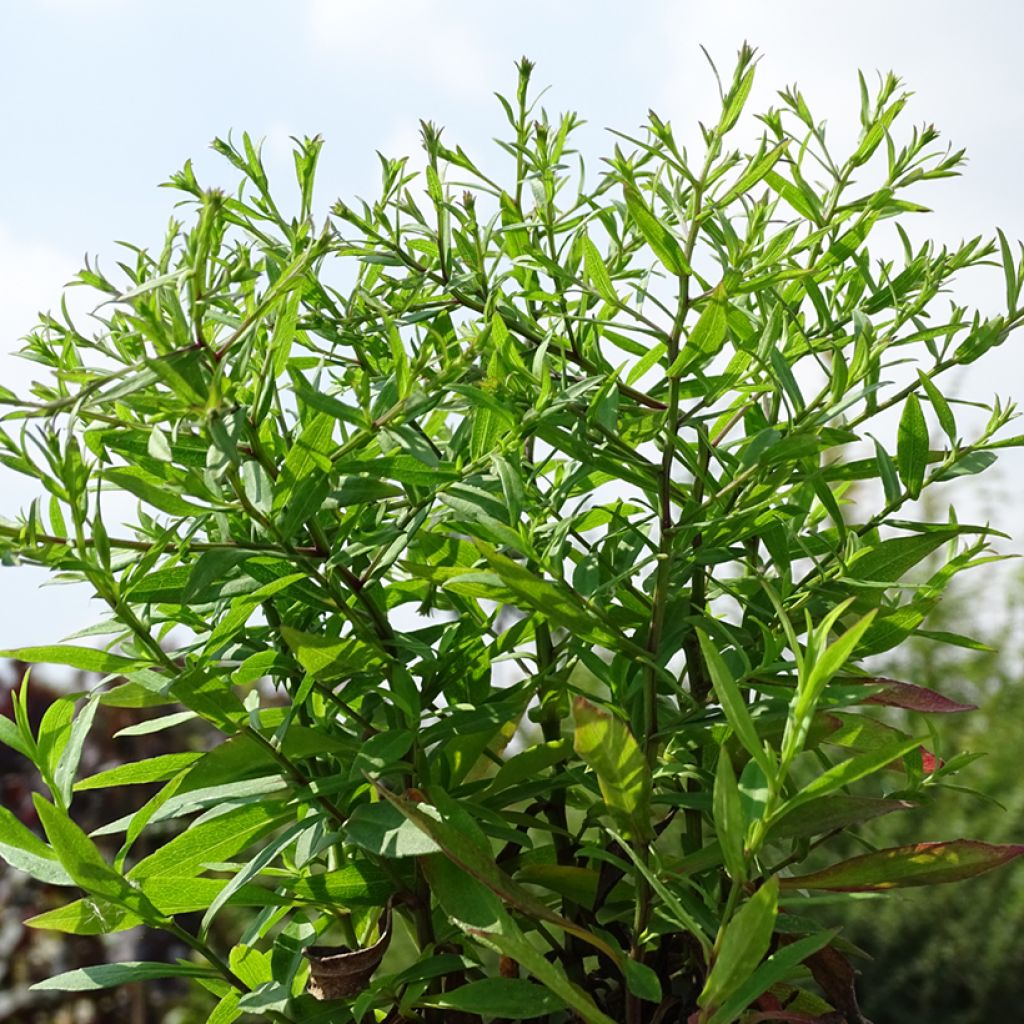

Aster ageratoides Asmo
Aster ageratoides Asmo
Aster ageratoides Asmoe
Aster
Why not try an alternative variety in stock?
View all →This plant carries a 12 months recovery warranty
More information
We guarantee the quality of our plants for a full growing cycle, and will replace at our expense any plant that fails to recover under normal climatic and planting conditions.
From €5.90 for pickup delivery and €6.90 for home delivery
Express home delivery from €8.90.
Does this plant fit my garden?
Set up your Plantfit profile →
Description
Aster ageratoides 'Asmo' is an excellent variety, not very demanding and not very susceptible to powdery mildew, which will find its place in all gardens. This pretty small perennial plant transforms itself from the end of summer and for 2 months into a real flowering cushion of small pale lilac-pink stars with a small amber centre. Its dense and regular silhouette and its abundant flowering will bring a very neat touch to the beds of heavier perennials. This very hardy aster appreciates sunny situations and well-drained but moist soil.
Aster ageratoides is a perennial plant native to northern Myanmar, southwestern China, and Tibet. It belongs to the Asteraceae family. The 'Asmo' variety is distinguished by its small size and compact habit. This plant develops from a suckering stump, very regular, composed of upright, stiff, and close stems, bearing slightly rough foliage of a matte green. The adult plant will form a bushy and round clump 40cm (16in) in height and 30cm (12in) in diameter. Quite early in late summer, from September (from late August in our warm regions), countless bouquets of small flowers appear in heads, with very fine outer ligules, of a very light lilac-pink colour, which make the foliage disappear. The plant gives off a subtle fragrance that accentuates its charm. It is a deciduous plant, with above-ground vegetation dying in winter and reforming in spring.
Plant Aster ageratoides 'Asmo' in any moist soil. It even accepts poor quality soil such as fill soil, or compact and clayey soils: its only requirement is not to compete with other perennials with a powerful root system. In the garden, for example, associate it with perennial geraniums, other dwarf asters, or light grasses such as Stipa tenuifolia or Muhlenbergia capillaris. It also forms pretty pastel flows between large rocks in a rockery. Its abundant and delicate flowering attracts pollinating insects. The flowering stems are very beautiful in a vase, in a floral composition, in the company of September roses.
The genus Aster offers a large number of species, represented by a multitude of floriferous varieties. There are varieties of all sizes, in an extremely rich range of colours. Several species are associated with each season.
Report an error about the product description
Aster ageratoides Asmo in pictures
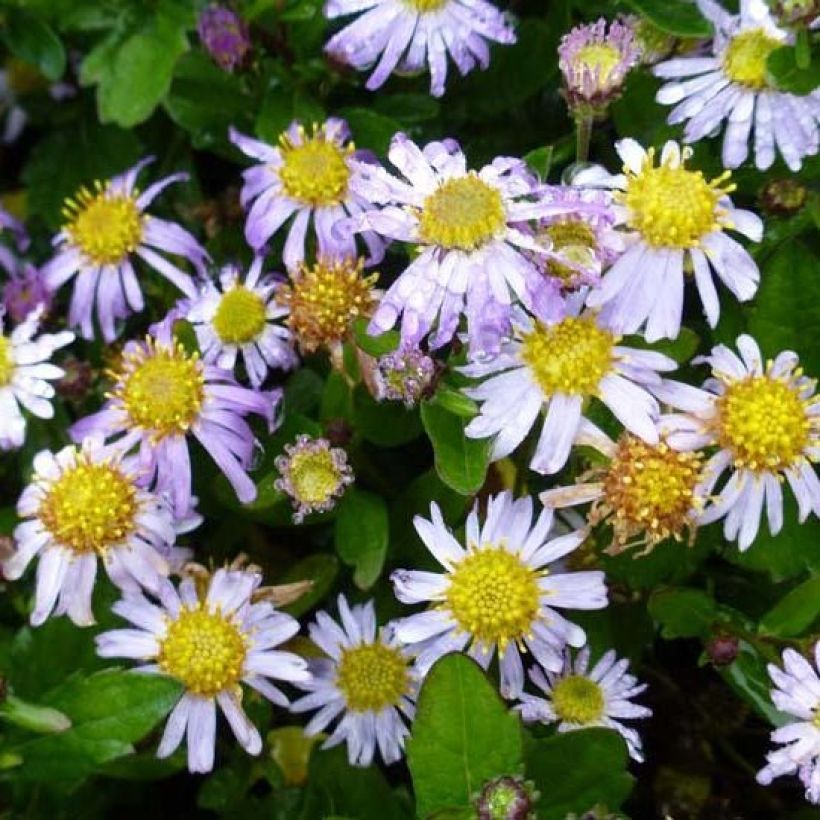

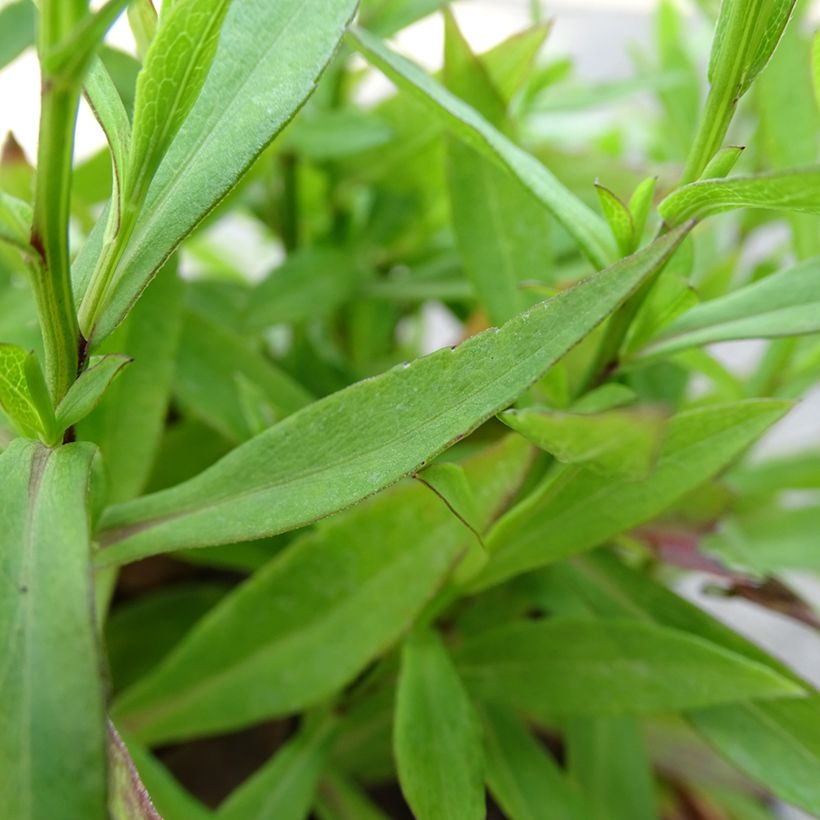

Flowering
Foliage
Plant habit
Botanical data
Aster
ageratoides
Asmoe
Asteraceae
Aster
Cultivar or hybrid
Other Asters
Planting and care
Plant the 'Asmo' Aster ageratoides in any soil that is not too dry; it even accepts poor quality soil such as fill soil, or compact and clayey soils. But if it adapts to lean and relatively dry soils, it will require fertilization in April, more frequent watering in summer, and mulching to keep its base cool. In a mass planting, respect a spacing of at least 50cm (20in) between plants. At the end of flowering, prune the clump to 10cm (4in). Divide the clumps every 2 to 3 years to maintain vigorous stumps and propagate this wonderful plant throughout the garden.
Plant it in a sunny location that will allow it to express its full potential. Its robust foliage seems to be very resistant to powdery mildew, even in hot weather. Its only requirement is not to compete with other perennials with a strong root system. Prune dry branches in winter.
Planting period
Intended location
Care
This item has not been reviewed yet - be the first to leave a review about it.
Summer flowering perennials
Haven't found what you were looking for?
Hardiness is the lowest winter temperature a plant can endure without suffering serious damage or even dying. However, hardiness is affected by location (a sheltered area, such as a patio), protection (winter cover) and soil type (hardiness is improved by well-drained soil).

Photo Sharing Terms & Conditions
In order to encourage gardeners to interact and share their experiences, Promesse de fleurs offers various media enabling content to be uploaded onto its Site - in particular via the ‘Photo sharing’ module.
The User agrees to refrain from:
- Posting any content that is illegal, prejudicial, insulting, racist, inciteful to hatred, revisionist, contrary to public decency, that infringes on privacy or on the privacy rights of third parties, in particular the publicity rights of persons and goods, intellectual property rights, or the right to privacy.
- Submitting content on behalf of a third party;
- Impersonate the identity of a third party and/or publish any personal information about a third party;
In general, the User undertakes to refrain from any unethical behaviour.
All Content (in particular text, comments, files, images, photos, videos, creative works, etc.), which may be subject to property or intellectual property rights, image or other private rights, shall remain the property of the User, subject to the limited rights granted by the terms of the licence granted by Promesse de fleurs as stated below. Users are at liberty to publish or not to publish such Content on the Site, notably via the ‘Photo Sharing’ facility, and accept that this Content shall be made public and freely accessible, notably on the Internet.
Users further acknowledge, undertake to have ,and guarantee that they hold all necessary rights and permissions to publish such material on the Site, in particular with regard to the legislation in force pertaining to any privacy, property, intellectual property, image, or contractual rights, or rights of any other nature. By publishing such Content on the Site, Users acknowledge accepting full liability as publishers of the Content within the meaning of the law, and grant Promesse de fleurs, free of charge, an inclusive, worldwide licence for the said Content for the entire duration of its publication, including all reproduction, representation, up/downloading, displaying, performing, transmission, and storage rights.
Users also grant permission for their name to be linked to the Content and accept that this link may not always be made available.
By engaging in posting material, Users consent to their Content becoming automatically accessible on the Internet, in particular on other sites and/or blogs and/or web pages of the Promesse de fleurs site, including in particular social pages and the Promesse de fleurs catalogue.
Users may secure the removal of entrusted content free of charge by issuing a simple request via our contact form.
The flowering period indicated on our website applies to countries and regions located in USDA zone 8 (France, the United Kingdom, Ireland, the Netherlands, etc.)
It will vary according to where you live:
- In zones 9 to 10 (Italy, Spain, Greece, etc.), flowering will occur about 2 to 4 weeks earlier.
- In zones 6 to 7 (Germany, Poland, Slovenia, and lower mountainous regions), flowering will be delayed by 2 to 3 weeks.
- In zone 5 (Central Europe, Scandinavia), blooming will be delayed by 3 to 5 weeks.
In temperate climates, pruning of spring-flowering shrubs (forsythia, spireas, etc.) should be done just after flowering.
Pruning of summer-flowering shrubs (Indian Lilac, Perovskia, etc.) can be done in winter or spring.
In cold regions as well as with frost-sensitive plants, avoid pruning too early when severe frosts may still occur.
The planting period indicated on our website applies to countries and regions located in USDA zone 8 (France, United Kingdom, Ireland, Netherlands).
It will vary according to where you live:
- In Mediterranean zones (Marseille, Madrid, Milan, etc.), autumn and winter are the best planting periods.
- In continental zones (Strasbourg, Munich, Vienna, etc.), delay planting by 2 to 3 weeks in spring and bring it forward by 2 to 4 weeks in autumn.
- In mountainous regions (the Alps, Pyrenees, Carpathians, etc.), it is best to plant in late spring (May-June) or late summer (August-September).
The harvesting period indicated on our website applies to countries and regions in USDA zone 8 (France, England, Ireland, the Netherlands).
In colder areas (Scandinavia, Poland, Austria...) fruit and vegetable harvests are likely to be delayed by 3-4 weeks.
In warmer areas (Italy, Spain, Greece, etc.), harvesting will probably take place earlier, depending on weather conditions.
The sowing periods indicated on our website apply to countries and regions within USDA Zone 8 (France, UK, Ireland, Netherlands).
In colder areas (Scandinavia, Poland, Austria...), delay any outdoor sowing by 3-4 weeks, or sow under glass.
In warmer climes (Italy, Spain, Greece, etc.), bring outdoor sowing forward by a few weeks.


































